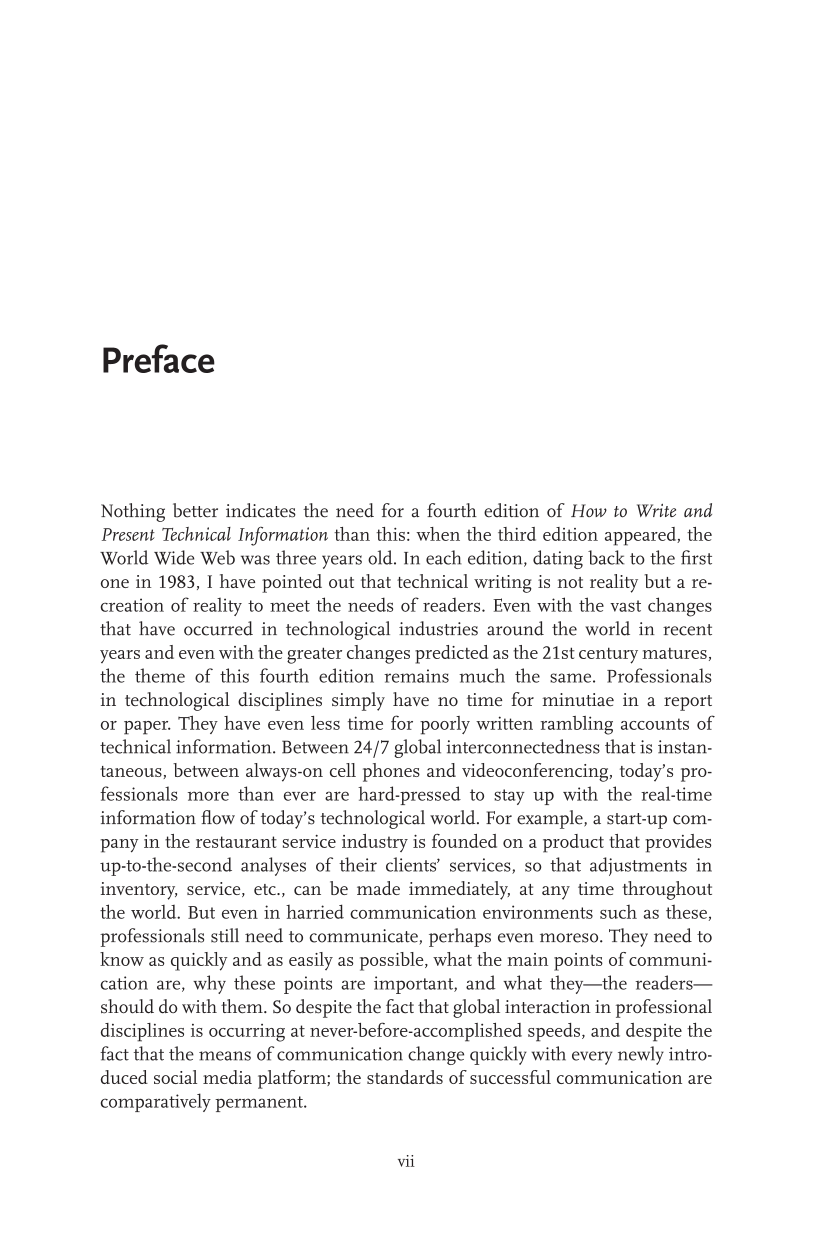vii
Preface
Nothing better indicates the need for a fourth edition of How to Write and
Present Technical Information than this: when the third edition appeared, the
World Wide Web was three years old. In each edition, dating back to the first
one in 1983, I have pointed out that technical writing is not reality but a re-
creation of reality to meet the needs of readers. Even with the vast changes
that have occurred in technological industries around the world in recent
years and even with the greater changes predicted as the 21st century matures,
the theme of this fourth edition remains much the same. Professionals
in technological disciplines simply have no time for minutiae in a report
or paper. They have even less time for poorly written rambling accounts of
technical information. Between 24/7 global interconnectedness that is instan-
taneous, between always-on cell phones and videoconferencing, today’s pro-
fessionals more than ever are hard-pressed to stay up with the real-time
information flow of today’s technological world. For example, a start-up com-
pany in the restaurant service industry is founded on a product that provides
up-to-the-second analyses of their clients’ services, so that adjustments in
inventory, service, etc., can be made immediately, at any time throughout
the world. But even in harried communication environments such as these,
professionals still need to communicate, perhaps even moreso. They need to
know as quickly and as easily as possible, what the main points of communi-
cation are, why these points are important, and what they—the readers—
should do with them. So despite the fact that global interaction in professional
disciplines is occurring at never-before-accomplished speeds, and despite the
fact that the means of communication change quickly with every newly intro-
duced social media platform; the standards of successful communication are
comparatively permanent.
































































































































































































































































